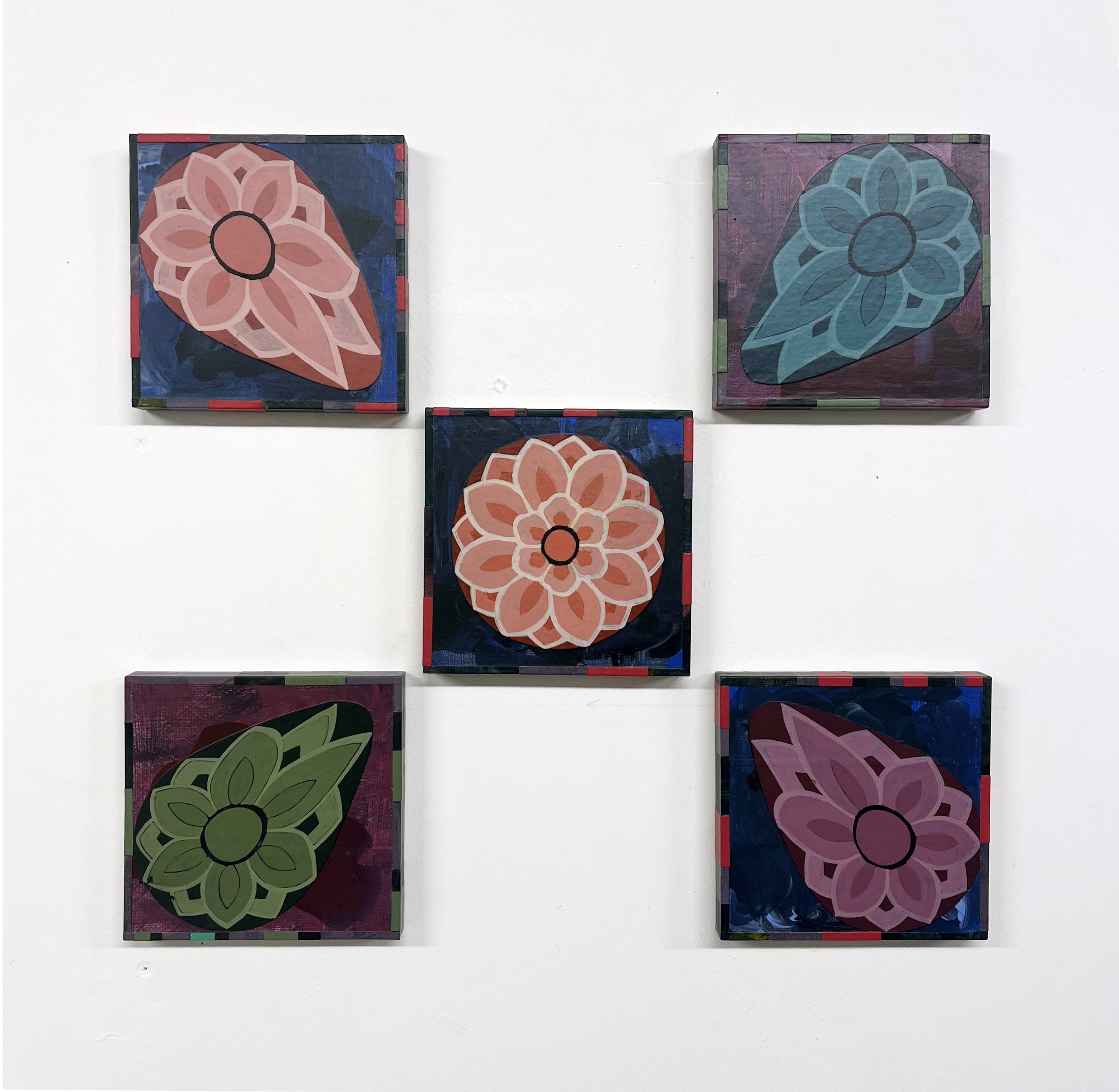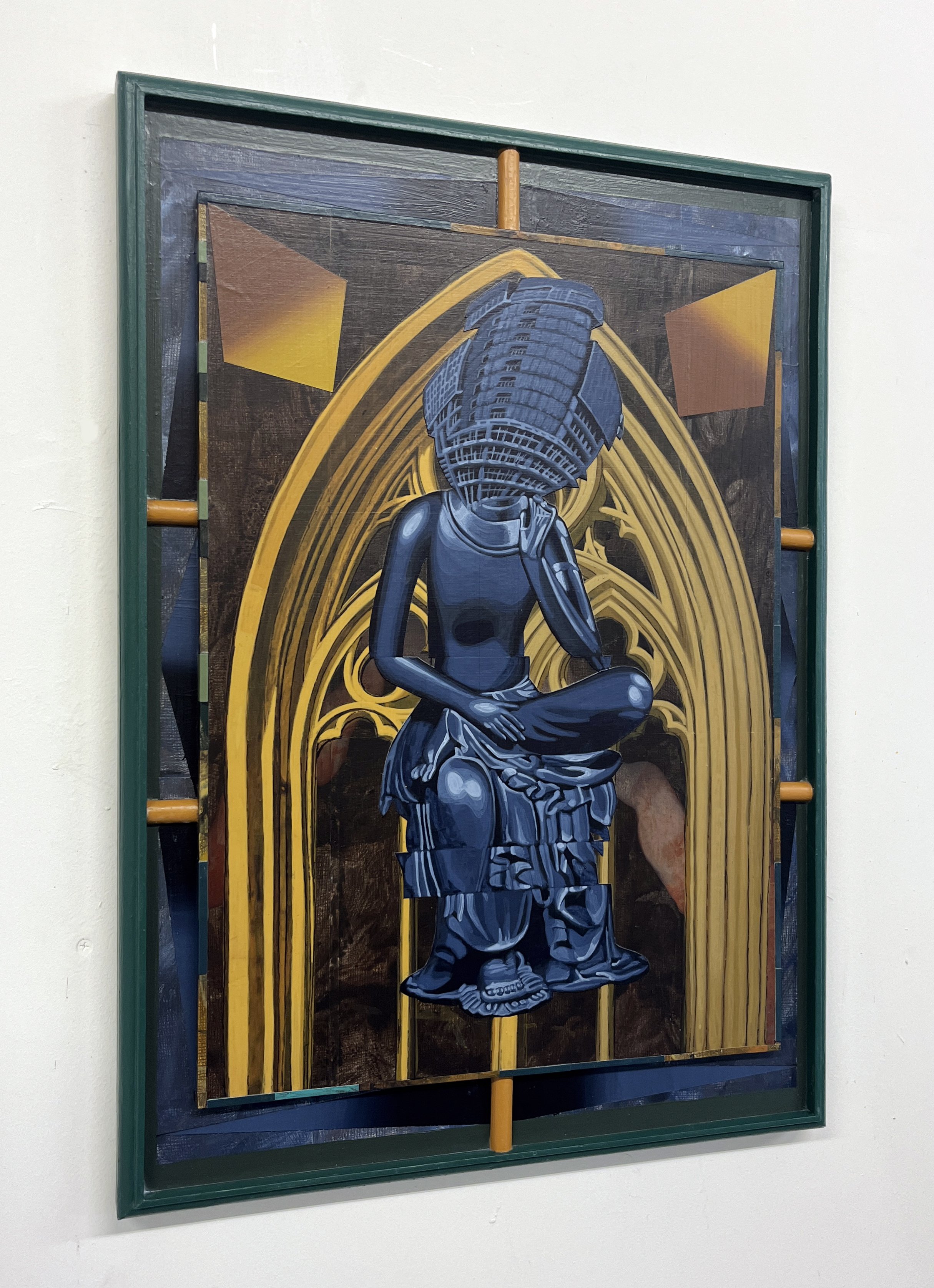Slee Altar Series,
FOCUS Art Fair New York 2024, 548 West, New York, 2024
Sleek Altar Series
FOCUS Art Fair New York 2024
548 West
New York, US
2024
-
Abysmal Orbit
Youngeum Museum of Contemporary Art
Gwangju, South Korea
2024
Born in Seoul, South Korea, and having lived and worked in London for a decade, Joonhong Min’s identity is inextricably tied to the concept of the city, and capturing the impact, chronic anxiety, and fatigue of urban environments is at the core of his practice.
His work responds to wider social and political contexts that have shifted our relationship to the city, such as the COVID-19 pandemic and the nearly year-long lockdown in which society, unable to move freely in the physical world, migrated to indulge in virtual spaces instead.
Min is concerned with the constant and in-depth transmission of products and people in social media and advertising. These images appear and disappear seamlessly and meaninglessly on a single, square screen. On Instagram, YouTube, and TikTok, images that stimulate peripheral interest are quickly consumed, providing the user with gratifying content that filters out our uncomfortable, harsh reality in favour of uncomplicated and addictive entertainment. The dangerous and paralysing effects of this prevent any further reason or thought from occurring.
Having originally depicted predominantly architectural structures of the city, Min’s focus has subsequently shifted to incorporating the figure, commercial products, and virtual landscapes that allow his practice to explore beyond the visual representation of the ‘anxieties of urban life’ to visualise fundamental questions about contemporary society.
The outcomes of Min’s multimedia works are not easily observed. The scenes and figures created through the juxtaposing of urban spaces undergo multiple disjointed vanishing points and uncomfortable combinations of distorted and fragmented bodies, anonymous human figures and commercial objects. The subjects are framed by ambiguous and pretentious shapes that are both diametric and abstract; they are spaces that could be interpreted as virtual or real or perhaps, both.
Min often incorporates interchangeable reliefs, installations and videos into the work. In turn, these pieces replicate the architectural qualities and specific behaviours that Min so diligently interrogates and these are presented as processed and over-edited symbols of mass consumption. The viewer is invited to explore the structures and images in the same way they encounter the physical and virtual spaces that make up our society, as curious but active participants that enable this culture to continue. _
The Fatigue Society (2010), by the Korean-German philosopher Byungchul, details the human condition in modern and technologically advanced capitalist societies. In this work, he characterises society as hysterical as it is filled with depression, anxiety, and a culture of overworking. He argues that these features are caused not by a lack of mind, but by its excess. This text has proved to be a significant influence on Min’s research alongside the many despairing interviews with scientists warning of reckless environmental damage, the resulting climate crisis, the launch of Vision Pro announcing a new, virtual world, the hundreds of retouched selfies that appear when we open social media and news footage conveying the horrors of war in real-time. Consequently, Min’s practice laments how this overload of information makes us increasingly blind to what is occurring to the extent that these behaviours now appear as natural and benign. But, despite this cultural shift gaining increasing popularity, Min remains intent on leaving behind a record of those who chose to reject assimilation and try to live in the present instead.
-Amy Gilles







































